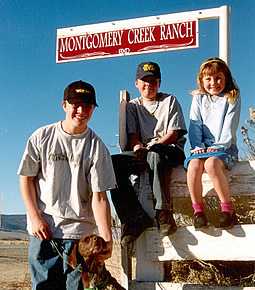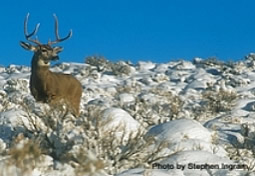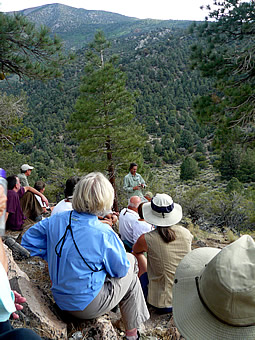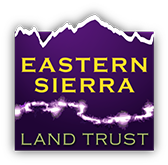To fulfill our mission of protecting vital lands in the Eastern Sierra, we commit our time and resources to specific programs: Working Farms and Ranches, Critical Habitats, and Community Connections. Through continued member support and successful fundraising, we plan to expand our efforts to additional critical habitat and important Eastern Sierra landscapes.
Working Farms and Ranches Program
 The working farms and ranches of the Eastern Sierra are scenic, historic, and a vital part of our economy and rural character. Our Working Farms and Ranches Program helps ranchers and farmers to sustain financially viable agricultural operations on their land, against rising pressures to subdivide. In places like the Bridgeport Valley and Montgomery Creek Ranch, we are helping landowners to set up voluntary land protection agreements that permanently protect family farms and ranches.
The working farms and ranches of the Eastern Sierra are scenic, historic, and a vital part of our economy and rural character. Our Working Farms and Ranches Program helps ranchers and farmers to sustain financially viable agricultural operations on their land, against rising pressures to subdivide. In places like the Bridgeport Valley and Montgomery Creek Ranch, we are helping landowners to set up voluntary land protection agreements that permanently protect family farms and ranches.
In this way, landowners retain title and management of their property, while designating how their land may be used now and in the future. For example, landowners may want to protect their land’s current agricultural use in perpetuity by prohibiting any subdivision or land use that would compromise those protected qualities, while retaining all other property rights. Landowners also may benefit from significant tax advantages currently and for future generations.
This program is made possible through the support of the California Farmland Conservancy Program.
Critical Habitats Program
 As our population grows, the wildlife of the Eastern Sierra can be crowded out of migration corridors, wetlands, and breeding grounds. Rare plants can be impacted by development, fire, or noxious weed invasion. From mule deer to songbirds to the Inyo County star-tulip, our Critical Habitats Program is working to maintain the viability of our region’s wild inhabitants, through public education and land protection agreements.
As our population grows, the wildlife of the Eastern Sierra can be crowded out of migration corridors, wetlands, and breeding grounds. Rare plants can be impacted by development, fire, or noxious weed invasion. From mule deer to songbirds to the Inyo County star-tulip, our Critical Habitats Program is working to maintain the viability of our region’s wild inhabitants, through public education and land protection agreements.
Property owners are protecting their wildlife habitat today in places like Swall Meadows, where several landowners have helped protect the critical migration corridor for the Round Valley mule deer herd, and Big Hot Springs Ranch near Bridgeport, where owners have preserved important habitat along the scenic Highway 395 corridor. If you’re a landowner who would like to conserve Eastern Sierra wildlife and plants on your property, we can help.
Community Connections
 The Eastern Sierra region is a unique blend of farms and ranches, wildlife and plant habitats, scenic vistas and open spaces that are all vital parts of our quality of life and economy. Preservation of these lands benefits us all. And preserving the Eastern Sierra goes beyond protecting land with legal tools, it includes the whole community working together to keep our region healthy and thriving, for now, and for the future.
The Eastern Sierra region is a unique blend of farms and ranches, wildlife and plant habitats, scenic vistas and open spaces that are all vital parts of our quality of life and economy. Preservation of these lands benefits us all. And preserving the Eastern Sierra goes beyond protecting land with legal tools, it includes the whole community working together to keep our region healthy and thriving, for now, and for the future.
ESLT is dedicated to having an active role in our communities — educating people of all ages about the value of preserving rural lands in the Eastern Sierra. Community Connections offers ESLT members and the entire Eastern Sierra community, residents and visitors, the opportunity to connect with our treasured lands — to live, to learn and to experience the value of preserving these lands.
By connecting people to the land and cultivating a sense of appreciation for our region and all that it offers, Community Connections enriches our lives and helps to foster awareness for permanent preservation. ESLT is committed to ensuring that this region and all that it offers, lives on…
Lands in the Eastern Sierra region are irreplaceable — please join us at an upcoming event, and experience the value of preserving our magnificent rural lands.
The latest addition to ESLT’s Community Connections Program, The Eastside Pollinator Garden Project is now bringing gardens and yards throughout the Eastern Sierra to life by helping our communities build pollinator habitat! Learn about the project and how you can certify your garden as pollinator-friendly here.
To learn more about these ESLT programs contact us.

